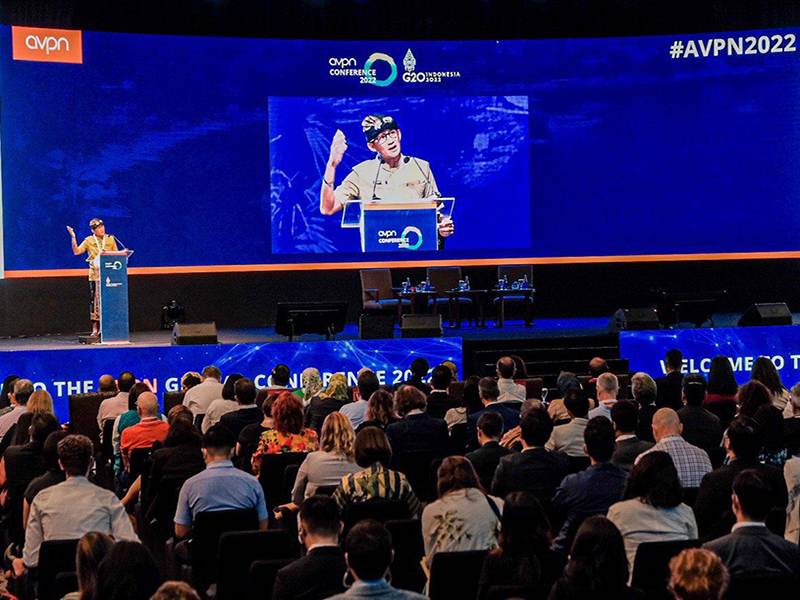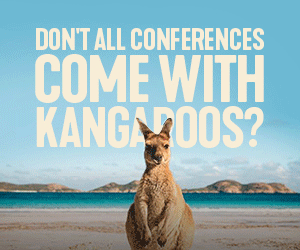AVPN: “The role of our organisation is to dissuade people from reinventing the wheel”

Associations and enterprises that initially grew organically need to look for new ways to drive collaborative innovation that delivers on what their members need today. In her session at the last European Association Summit, Caroline McLaughlin explained how to develop smart digital learning strategies that drive the engagement and growth for your members.
Caroline is the former Chief Partnerships Officer at Asian Venture Philanthropy Network (AVPN), a large network of over 600 investors established in around 33 countries primarily focused on increasing the flow of financial, human and intellectual capital to the social sector in Asia. Clearly, her strengths lie in its ability to create partnerships and social investment roadmaps on positive impacts and measurable results. HQ spoke to her:
Headquarters: Did replacing the face-to-face element with the distance and coldness of a dialogue between screens bring any risk when you decided to move to an online meeting?
.jpg) Caroline McLaughlin (on the right): At the beginning of the pandemic, we invested heavily in technology which allowed us to do networking events between breakout sessions, so the first conference we held online was in 2020. Then we found a new platform that allowed us to bring people together between sessions... but no one did. We tried to come up with creative processes to get the AVPN team into rooms to facilitate conversations, but it wasn’t easy. In 2020, people were happy to consume online content at a large conference, but they weren’t as comfortable attending webinars on zoom without knowing who they would see and meet. That’s why we continued to produce content at online events, but when hosting webinars, we carefully selected who would be in the rooms. We then shared that information so that attendees felt more comfortable with the people they wanted to meet and who are useful to their network.
Caroline McLaughlin (on the right): At the beginning of the pandemic, we invested heavily in technology which allowed us to do networking events between breakout sessions, so the first conference we held online was in 2020. Then we found a new platform that allowed us to bring people together between sessions... but no one did. We tried to come up with creative processes to get the AVPN team into rooms to facilitate conversations, but it wasn’t easy. In 2020, people were happy to consume online content at a large conference, but they weren’t as comfortable attending webinars on zoom without knowing who they would see and meet. That’s why we continued to produce content at online events, but when hosting webinars, we carefully selected who would be in the rooms. We then shared that information so that attendees felt more comfortable with the people they wanted to meet and who are useful to their network.
HQ: What major differences have you found in conducting the digital learning experience and courses in both face-to-face and virtual formats?
CM: In the online format, we were able to bring together a much larger and much more diverse group − geographically and gender-wise − from a stakeholder perspective. This is because people didn’t need to fund their trip to Singapore and spend days of their schedule attending an in-person course. Secondly, we were able to offer a richer programme with more in-depth speakers and content that we would not have been able to do in person. Thirdly, the sophistication of the offerings and the comfort of the participants in an online environment allowed us to to run more in-depth sessions and encourage small group work. It was a curious experience since it’s much more difficult to create an ongoing and closer relationship with someone who is online. I truly believe that when you get to know someone personally you can be pleasantly surprised at how you get a better connection, and this also applies to a congress. However, we promoted the course as a way to both build a network impact investment and as a way to get a professional qualification during this time of pandemic. We made sure that we could offer added value to the fellowship at an exceptional time.
HQ: For someone who wants to invest and reap both financial and social impact returns, it is difficult to do this without external assistance. Why is this?
CM: If you have a venn diagram then impact investment sits at the nexus between investment, philanthropy where investment can be applied in tandem with philanthropy to deliver both a financial and social return. People sitting on the investor side often seek to maximise stakeholder returns, and then put some of that funding into the social sector. What the philanthropic sector is saying is that with so many sensitive and huge issues in the world until we have the organisations and the thinking process focused on social return, we will never make a substantial change. Our first fellowship was for impact investors and we created champions for impact investing across Asia. Every investment portfolio should include a social impact concern, and this is the message we try to get across to corporate stakeholders and banks. Investors have to realise that if they are going to talk about impact investing they need a new language and measurements to move the needle. It's not about grants or charity.
What the philanthropic sector is saying is that with so many sensitive and huge issues in the world - until we have the organisations and the thinking process focused on social return - we will never make a substantial change.
HQ: How does AVPN materialise this concept of partnerships for growth within the organisation's mission?
CM: One of AVPN’s priorities when forging new partnerships is that they can be relevant and meet the needs of our network. When you have a network like ours, many of its members operate in areas like consulting, providing quite a few services. The important thing is that you are constantly aware of what the role of the network is, and for us it is to move capital for impact. When we spoke to the Gates Foundation about the Asia Gender Network, we were able to bring together a high-level group of women in a network to raise the issue and understand how to improve the outcomes of women’s goals across Asia. Another of the projects we are working on with the Rockefeller Foundation right now is on “Impact Leaders” in the global South. How to find leaders who can be supported and with whom we can develop leadership skills. The role of an organisation like AVPN is to dissuade people from reinventing the wheel. Asia has 60% of the world’s population, so it is wrong to think that you are going to do something for the first time on such a large continent. Our main goal is to help organisations understand what is already working, who they can create alliances with, and what kind of impact projects and leadership they want to form, so that we can then step in as a facilitator to deliver that vision.
HQ: What setbacks has the pandemic caused to your community impact projects?
CM: It was a challenge for the Asian gender network, for example, when we tried to bring individuals together for our projects. We were able to do a lot online, but it’s completely different to have a group of high profile women on a weekend talking about their experiences and how they created their impact. It took us some time to work out how you can pivot to certain things. I believe the big transfer for the next decade will be collaboration. One of the things we’ve seen in collaborative philanthropy is that the timeframe to achieve the SDGs is getting shorter − unless funds are pooled or multiple teams are ready to channel ideas, it simply won’t happen. Another big trend will be in data management: how to pull AI to our benefit; how to use data to make better decisions about funding, etc. And the third addresses the dynamics of power in a multi-polar world. I think the work going on in the US in terms of giving more strategic funding to organisations on the ground will facilitate faster and more sustainable change. Because you are building trust with an organisation that better understands how to spend that money and how to move in a more informed way.
HQ: What partnerships and collaborative projects does the AVPN have in mind for the near future?
I think partnerships will look very different for associations and networks as they look for new ways to engage with members around themes and regions. Even with our annual conferences taking place in June, we’ve heard several organisations express that it’s difficult to get travel approvals. Thinking about partnerships like we did in 2019 will not be the same, because people will travel less. I think corporations have saved a lot of money in the last couple of years and while their employees will continue to travel, the idea that they will attend every workshop or breakout session is unlikely. I think some conferences will remain at the top, but I don’t think the dynamics will be the same as before. If it is a network, what issues will be fundamental to debate and who to partner with so that the projects materialise? For example, for an organisation of our type, it might be important to create a regional unit to address more localised issues. Or imagine more chapters and think about how to bring those chapters together in a regional meeting instead of the old quarterly meetings. Look positively to the best parts of online learning and hybrid connections, and incorporate them in the future.
Other Articles
About Us
Supported by the Union of International Associations (UIA), the International Association of Professional Congress Organisers (IAPCO) and the Interel Group, the global public affairs and association management consultancy, Headquarters Magazines serve the needs of international associations organising worldwide congresses.















